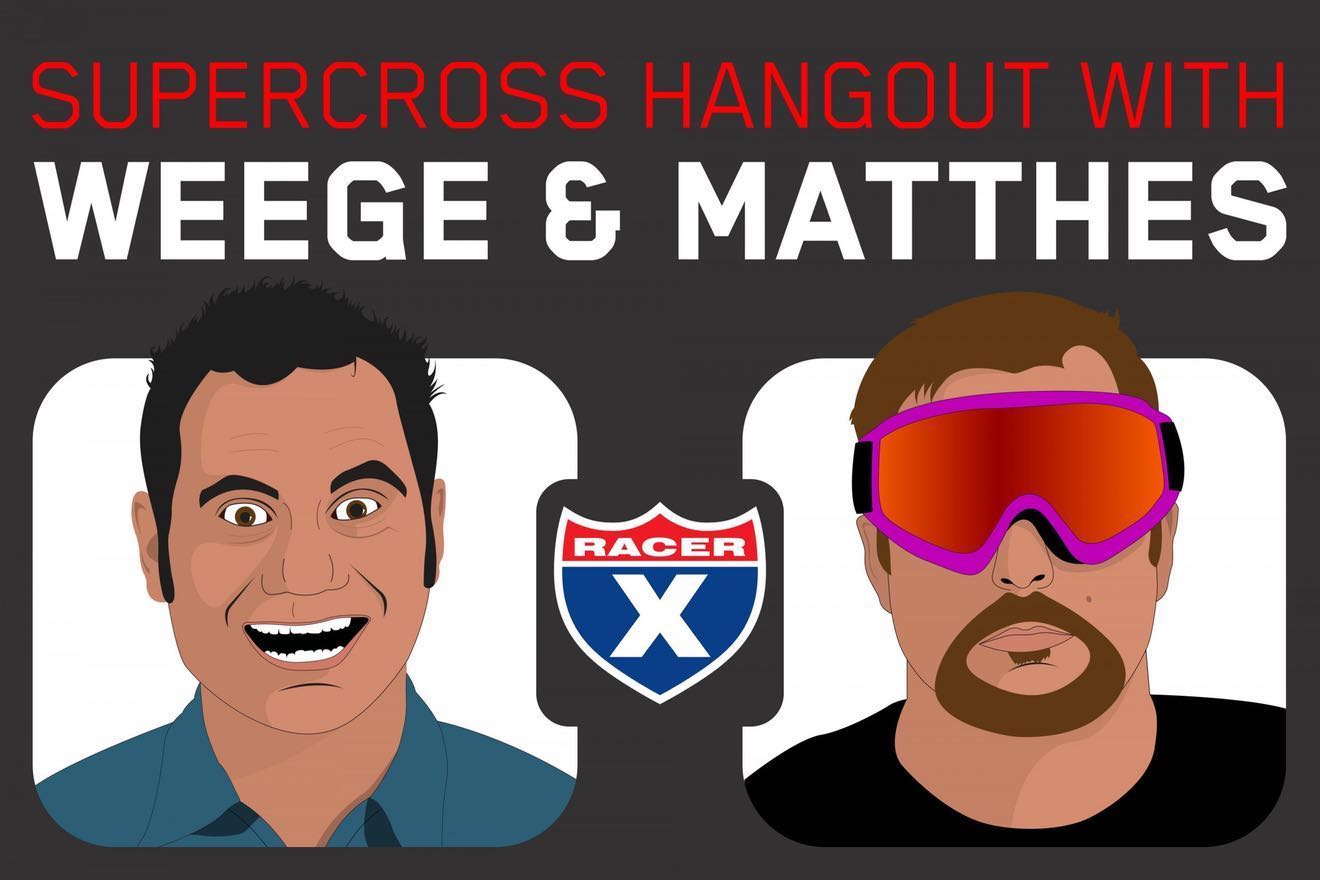A few weeks ago I penned a column about supercross TV ratings and it generated some real buzz (good ratings?). The good news is the ratings just keep getting better and better. Fox Sports PR tweeted this week that overall SX ratings are up 19 percent compared to last year and up 16 percent in that coveted 18-49 age demo. That’s amazing growth, made even amazing-er (is that a word?) considering that just about all TV ratings, in general, are down, because there are so many more things to do for entertainment besides watch traditional TV these days. Also a factor, more and more people are cutting cable and Nielsen (who measures TV ratings) isn’t able to calculate devices like Sling at the moment. Even the mighty NFL experienced a minor ratings drop this year, and NASCAR is getting a lot of “lowest in a long time” numbers lately. Audiences are segmenting and eroding all over. Supercross would be a success if it merely held the line. Actual increases? Hallelujah!
What I’ve been trying to point out isn’t that the sheer numbers look good or bad, but to explain that what impacts the numbers is surprising. Anyone who follows the sport closely figures attention (and ratings) must hinge on things that involve the racing. Are the points close? Are the tracks exciting? Has there been compelling racing and good storylines? Are there a lot of stars and parity in the races?
NUMBERS: Thru 10 events, @MonsterEnergy #Supercross viewership up 19% year-to-year across @FOXSports nets; up 16% w/ Adults 18-49 #SXonFOX
— FOX Sports PR (@FOXSportsPR) March 22, 2017
It’s hard to find any data to support that. What matters more is what time the race is on, what network it’s on, and what show came on before it. TV is funny like that. There are a few must-see blockbuster things that all of “America” is aware of, but that’s a tiny part of the TV world. Yeah, everyone knew Seinfeld aired on Thursdays, and everyone knew a Peyton Manning versus Tom Brady game was a better matchup than the Jets against the Bills. But you could probably safely say that 90 percent of the TV shows operate in the ether—it’s just kind of floating out there, and a few people know exactly when and where to catch it, but mostly, it’s just floating, and hoping someone notices.
TV execs know this, and lately, supercross and Fox Sports are working hard to play that game. The real key to ratings isn’t more passing or personality (that stuff helps but it doesn’t make the biggest impact) but rather good time slots, good time zones, good networks, and good lead-ins. Don’t feel bad about that—these things have a huge impact on the ratings of just about everything on TV. Heck, even going back to that Seinfeld reference, the show had terrible ratings until the day NBC put it on after its hit show Cheers, and then everyone accidentally caught it, realized it was awesome, and it was off to the races. NASCAR historians always point to the 1979 Daytona 500 as the launch pad for the sport. It was the first 500-mile race to ever air live on TV. Lore says a huge snowstorm in the Northeast that kept random folks stuck in front of their TVs all day, and then, with that audience all built up, a crazy finish, and a fight at the end set the sport ablaze. Yeah, the fight was cool but if the race wasn’t aired live on CBS during a snowstorm in February, no one would have known. It wasn’t like you could watch it back on VHS, DVR, the internet or even ESPN SportsCenter highlights back then.
So how is supercross learning to work within this system? Moving around start times and networks, for starters. It’s not a coincidence that a few West Coast races started early this year. Also, it was a huge, huge deal for Fox Broadcast Network (not Fox Sports 1) to commit to airing the Indianapolis Supercross race in primetime on Saturday night. Paired up against the NCAA March Madness tournament on one network and an NBA game on another, supercross wasn’t going to be a blockbuster, so Fox wasn’t going to win the ratings battle for the night, but that’s a great and cool piece of negotiating by Feld and the network to get it going anyway. Fox Broadcast Network didn’t win the ratings race, but Monster Energy Supercross drew nearly 900,000 people, which a tweet proclaimed is the largest SX audience ever on Fox. So, a big night for supercross, an okay night for the network. Spectacular to get that kind of opportunity, and it worked.
BIG DAY: @MonsterEnergy Supercross on @FOXtv from Indy scores 813k viewers, most-watched ever on FOX, @FS1 or #SPEED #SXonFOX @FOXSports pic.twitter.com/Q34bp8dvsM
— FOX Sports PR (@FOXSportsPR) March 21, 2017
It’s hard to get the mix right, though. A few weeks ago, I thought the delayed broadcast of the Toronto race would be a hit because it was coming on right after a huge UFC fight, but it didn’t draw very well, probably because it started at 10 p.m. and ended at 1 a.m. EST. But I know that when the right notes were hit—the big Fox Network, with a live show starting early on the East Coast (Indy), and a great lead in (NASCAR Xfinity led into the Indy SX on Fox Network, it drew 1.85 million)—it worked.
I expect more changes to chase the ratings in the future, as supercross is just getting warmed up for this game. We’re only a few years into live shows, only a few years into day races, only a few years into live network shows like Saturday’s Fox broadcast. Plus, the overall TV production is massively improved and darned good. Once you’ve grabbed an audience, of course it’s important to give them something compelling to watch, and I wouldn’t be surprised to see bigger changes soon. Maybe format changes to get the star riders out there more? This year’s main events are already longer to try to get more time for the likes of Ryan Dungey and Eli Tomac. In related news, the revamped American Flat Track series (AMA dirt track) has signed a deal with NBCSN this year, and quickly changed the qualifying structure so that all the riders, even the best ones, have to race both the heats and the semis. They don’t want the stars going quiet in the pits for half the night, and that’s still an issue with the supercross TV broadcast. (Back when the races were geared only toward the fans in the stands buying tickets, it didn’t really matter because they will sit and wait for the mains. But on TV, losing your stars for an hour makes it too easy for fans to click the remote and check out.) There’s a real study of the ratings going on, and for the first time, we’re seeing significant changes to the supercross show to help make the numbers better. Good racing always helps, but some of the answers as to what matters are things we hardcore fans wouldn’t think matter at all.





